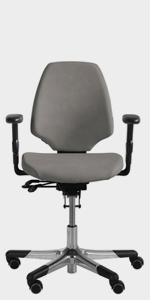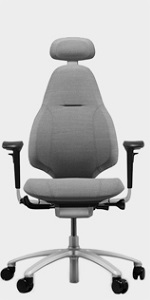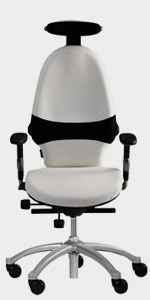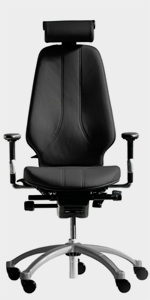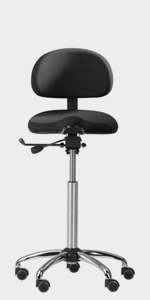|
|
Adjust your RH chair
You have the best ergonomic chair in the world – but unless you know how to adjust and use it – it won't do much for your well-being.
There will always be different views on the right way to sit. However, the RH approach reflects the changing modern workplace and the result is 'Active' sitting.
Our chairs are designed and engineered with this in mind.
|
Instruction Videos
Click on your chair model to see a user instruction video.
|
|
Seat Height
This is always the first chair adjustment to make.
Your desk height will determine the height of your chair - unless your desk is a height adjustable type.
Ideally, your hips should be above your knees and your thighs pointing slightly downwards, usually just above 90 degrees.
This will help your digestive system to perform better, while it will be much easier to breathe.
Tip: If your feet don't lie flat on the floor try using a footrest (click here).
|

|
Backrest Height
As the backrest is one of the most important parts of an ergonomic chair, it is essential that it is properly adjusted.
You need the correct lumbar support for your lower back – in order to prevent back pain from developing in this area.
The backrest height should be adjusted so that the lumbar support fits into the 'S' curve of your back, usually above the belt line.
Always sit back into your chair, so that your lower back is against the backrest.
If you perch or slouch on your seat for long periods of time, the chances of developing a back problem will increase.
|
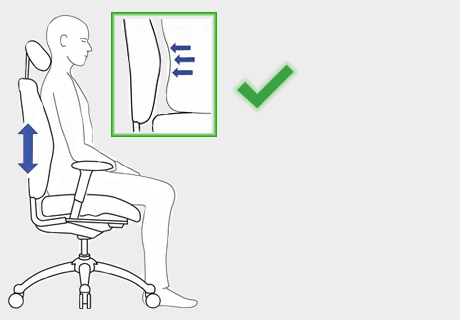
|
Backrest Angle
Because you perform different tasks in your RH chair, each task requires a different type of support.
An independent backrest angle provides the correct support for each task you do.
The backrest angle should be set so that the backrest the whole of your back.
There should be no gap between your back and the backrest.
If there is, adjust the angle in or out.
Tip: When typing on a keyboard for prolonged periods, angle your backrest forwards, so it touches (without pushing) your back.
|
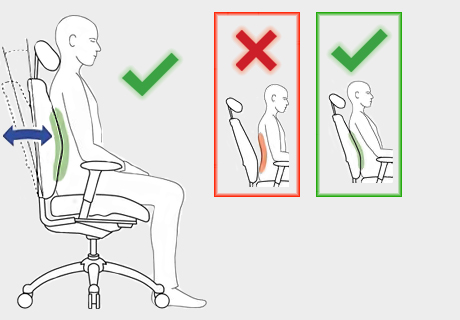
|
Seat Depth
Some people have longer legs than others.
Adjusting the seat depth will remove pressure from the back of the knees, while at the same time ensuring adequate support of the thighs.
This will improve circulation and oxygenation of the body.
As a rough guide, the right distance between the back of your knees and the front edge of your seat, should be the width of 2 to 4 fingers.
For smaller users, this may not be possible, so try to ensure pressure isn't be applied to the back of the knees.
|
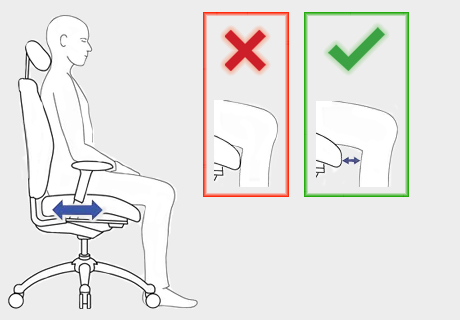
|
Armrests
Armrests are designed to take pressure and weight off your shoulders and remove strain from your spine.
Armrest should be adjusted for your size and also for the task you are doing.
The height should be adjusted so that when your forearm rests on the armrest, it should be parallel with the floor and your shoulders relaxed.
The width of the armrests should be adjusted to support your arms slightly outwards from your body.
Tip: When using the phone for extended periods adjust the height of the arm rest upwards to provide support while keeping your spine straight.
|
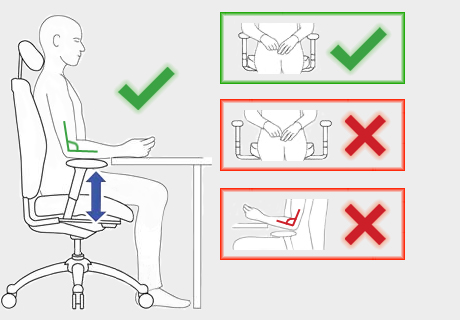
|
Tilt Mechanism
RH promotes active sitting. As you perform different tasks in your daily work you need to be able to switch smoothly from one position to another in your chair.
Having your chair in an open position allows you to do this, whilst still maintaining optimal spinal posture.
It also improves blood flow and oxygenation resulting in less fatigue and more alertness in the workplace.
Once you have adjusted all the other settings including the tension, you should then switch the chair from locked to unlocked.
If the chair doesn't push you forward or backward it is ready to be used in an unlocked position.
Tip: Use the chair in its unlocked position as much as possible. This may seem unnatural at first but after sometime time you will begin to feel the benefits.
|
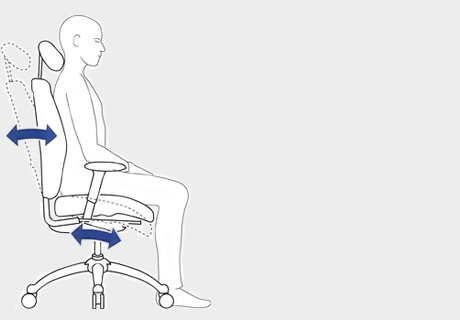
|
Tension Control
Your size and weight will determine the level of tension which you will need in your chair.
For 'Active' sitting, correct tension is one of the most crucial elements to adjust and get right in your chair.
Active sitting will allow for optimal circulation and oxygenation of the body, keeping you more alert at work, while still supporting the spine.
Once you have completed all the other adjustments (above) to suit you, unlock the seat tilt mechanism.
If the chair pushes you forward, release the tension control a little.
If the chair feels too loose, tighten the tension control until you achieve the correct balance.
Tip: When sitting in a balanced position with the lock open, try raising your feet off the ground. The chair should remain in a neutral 'floating' position if the tension is set correctly.
|
|
|
